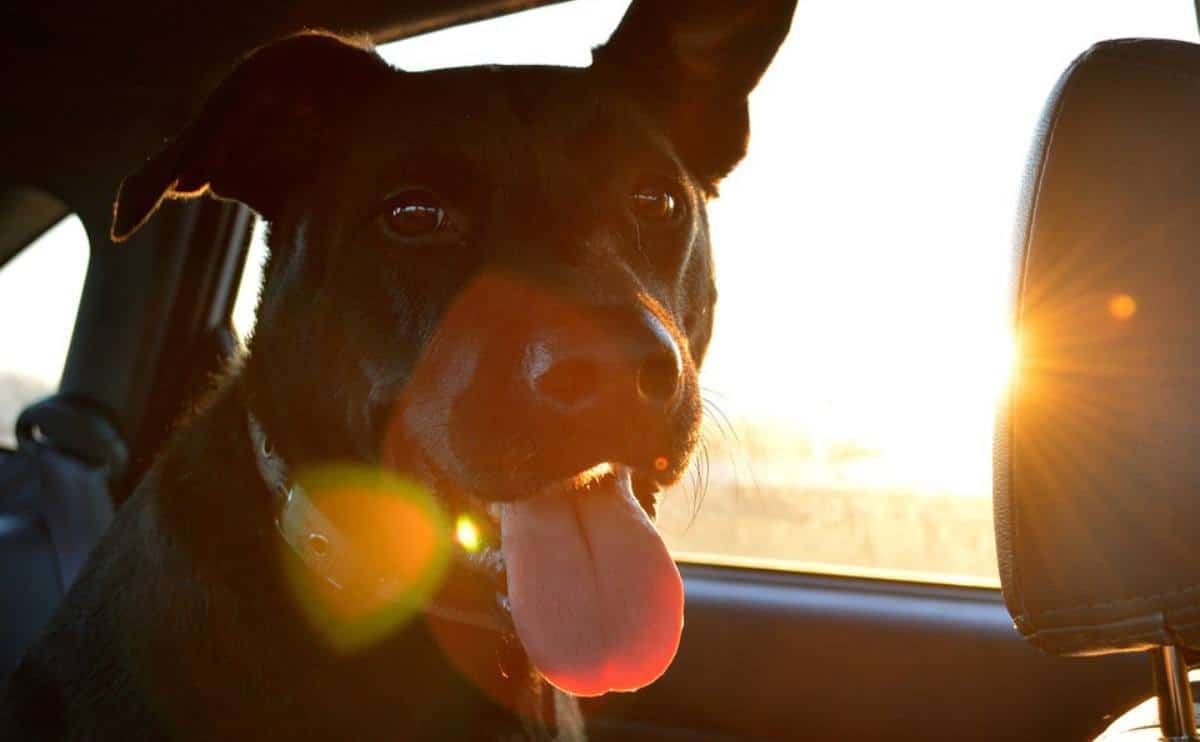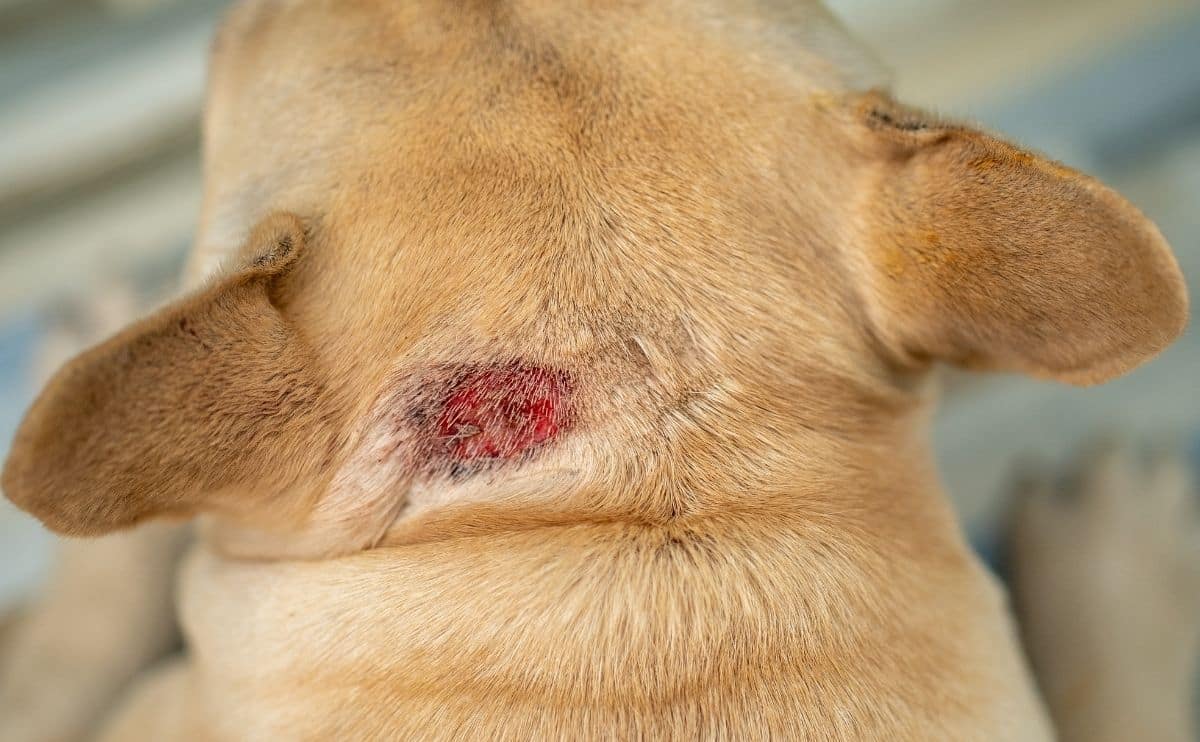Elbow Dysplasia In Dogs
When you purchase through links on our site, we may earn a commission. Here’s how it works.
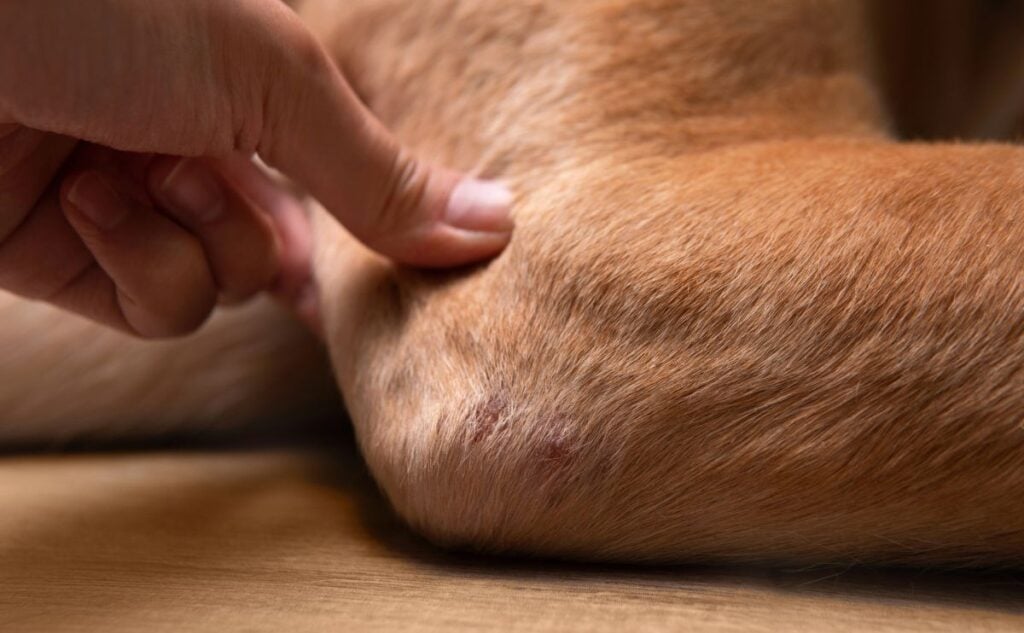
If your furry friend is limping on their front leg, has developed an abnormal gait, and is reluctant to exercise, your pup could have a condition called elbow dysplasia. This genetic disease can seriously compromise your pup’s quality of life, often at an early age. I’ll share the signs of this chronic disease, when it’s time to consult your veterinarian, treatment options, and much more vital information.
Table of Contents
What Is Elbow Dysplasia In Dogs?

Canine elbow dysplasia (ED) is a condition involving abnormal development of the elbow joint due to defects in cartilage development, abnormal bone growth, or joint stress. The elbow joint has a complex anatomy consisting of three bones: the humerus, radius, and ulna. These bones must work flawlessly together to allow your dog to move their elbow joint smoothly and without pain.
However, with elbow dysplasia, growth abnormalites inhibit the three bones from fitting together perfectly, causing abnormal weight distribution on areas of the joint, according to the American College of Veterinary Surgeons (ACVS). “Elbow dysplasia” is a blanket term for several different problems that can occur within the joint (in some cases, multiple issues can exist simultaneously).
- Fragmented medial coronoid process (FCP): a developmental defect of one of the coronoid processes (two small bony protrusions on the end of the ulna). In FCP, one of the bony protrusions develops a crack and separates from the rest of the bone.
- Ununited anconeal process (UAP): another developmental defect in the ulna, UAP occurs when the anconeal process (a small bony projection) doesn’t correctly fuse to the rest of the ulna.
- Osteochondrosis (OCD): an abnormal development of excessive cartilage on the end of a bone. This thick cartilage can detach from the bone. OCD can occur in any of the elbow bones, but it’s more common in the humerus.
- Elbow incongruity: the term to describe poor alignment of the elbow’s joint surfaces caused by either a short radius or a short ulna. These misalignments frequently contribute to the three elbow problems above, but elbow incongruity is sometimes deemed a separate issue.
What Causes Dog Elbow Dysplasia?
While elbow dysplasia is primarily believed to be an inherited condition, it has also been associated with improper nutrition (see the Prevention section below), defects in cartilage growth, prior joint trauma, and hormonal factors. Dogs with elbow dysplasia frequently exhibit symptoms as early as five months of age, though some with mild forms may not be diagnosed until they are four years or older. In up to 80% of cases, both of a dog’s elbows will be affected (called bilateral elbow dysplasia).
Breeds At A Higher Risk For Canine Elbow Dysplasia
Any dog (purebred or mixed) can develop elbow dysplasia, but it’s more common in large and giant breeds. The Orthopedic Foundation for Animals (OFA) has identified elbow dysplasia in over 160 breeds. The incidence of elbow dysplasia in these breeds ranges from minimal to over 50% in the evaluated dogs. Some of the most common breeds in the U.S. that have a higher risk of developing canine elbow dysplasia include:
- American Bully
- Bernese Mountain Dogs
- Bulldogs (English & American)
- Chow Chows
- German Shepherds
- Golden Retrievers
- English Springer Spaniels
- Labrador Retrievers
- Newfoundlands
- Pugs
- Rottweilers
Some breeds are prone to dysplasia in both their elbows and hips. See my article about hip dysplasia to learn more about this hind leg condition, symptoms, treatments, and more information.
How Do I Recognize The Symptoms Of Elbow Dysplasia In Dogs?
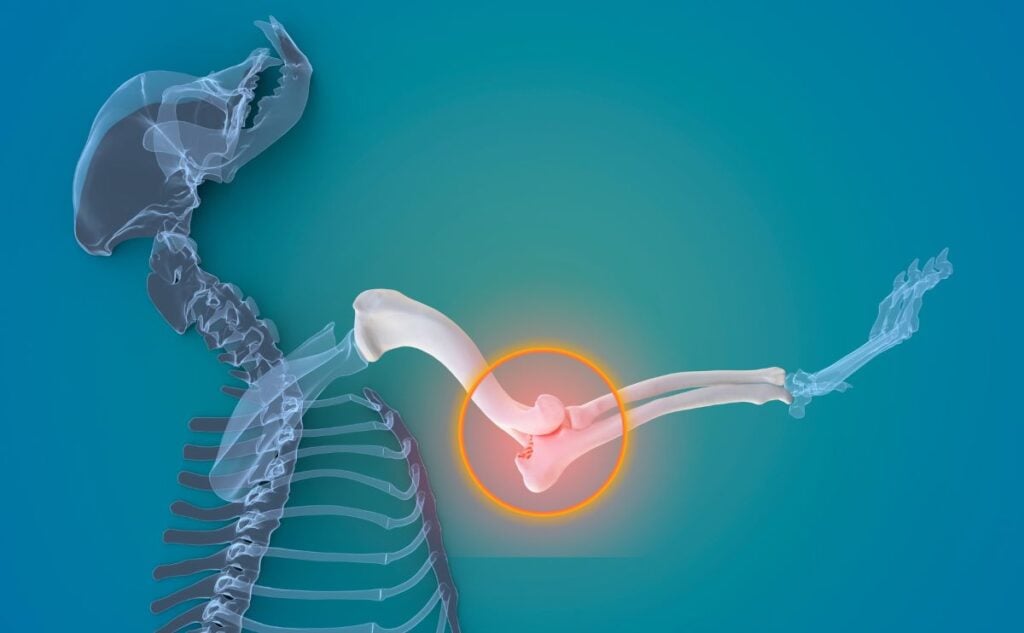
I spoke with Dr. Rebecca MacMillan, BVetMed, BSAVA, PGCertSAM, MRCVS, a companion animal veterinarian and surgeon in England, about the most telling signs of elbow dysplasia. “Dogs with elbow dysplasia usually have a limp in one or both front legs, which may come and go,” she explains. “It can sometimes be tricky for owners to work out which leg is causing the problem, especially as a degree of elbow dysplasia may be present in both front limbs.”
Dr. MacMillan says the limp may seem to respond to a course of anti-inflammatories and rest but comes back again once these have finished. “Your dog may also not like you stretching their front legs out or feeling around the elbow joint. Dogs with elbow dysplasia may also be stiff after rest and take a little while to get warmed up.”
According to the Cornell College of Veterinary Medicine, other signs of elbow dysplasia include:
- Lameness or limping in one or both front legs, sometimes accompanied by a head bob
- Walking with their paw turned inward and elbow turned outward
- Reduced range of motion and shortened stride
- Manipulating their leg by extending and flexing the elbow joint (a sign of pain)
- Swollen elbow
- Abnormal gait
- Decrease in activity level or refusal to exercise
“During my time in practice,” says Dr. MacMillan, “I have seen many dogs with elbow dysplasia, with the most common being Springer Spaniels and Labrador Retrievers. In my experience, the lameness is often mild and very subtle to begin with and may start when the dog is young. It’s quite typical to try medication and rest the first time it happens. But when dogs don’t respond to this, or if their lameness comes back, then further investigation is recommended. Left untreated, these dogs will develop arthritis leading to thickened, painful joints.”
Diagnosis
As with most conditions, early diagnosis and treatment lead to the best prognosis. So, if you notice any signs of elbow dysplasia, it’s important to contact your veterinarian as soon as possible. The first steps of diagnosis typically involve a physical examination in which your veterinarian will observe your dog’s gait, palpate the joint, and determine the range of motion.
Your vet will also take X-rays to determine the exact problem(s) occurring within the elbow joint. If the X-rays aren’t conclusive or your vet needs more detailed imaging, they may recommend a CT scan, MRI scan, or arthroscopy (minimally invasive scoping, using a camera to take images).
Elbow Dysplasia Grading
During diagnosis, elbow dysplasia is evaluated into grades based on image findings. However, these grades don’t always correspond with symptoms. For example, a dog with Grade 3 may not be experiencing as much pain and lameness as another dog with Grade 1 or 2. Here are the OFA’s official grading criteria.
- Grade I Elbow Dysplasia: Minimal bone change along the anconeal process of the ulna (less than 2mm).
- Grade II Elbow Dysplasia: Additional bone proliferation along the anconeal process (2-5 mm) and subchondral bone changes (trochlear notch sclerosis).
- Grade III Elbow Dysplasia: Well-developed degenerative joint disease with bone proliferation along the anconeal process greater than 5 mm.
Dog Elbow Dysplasia Treatment
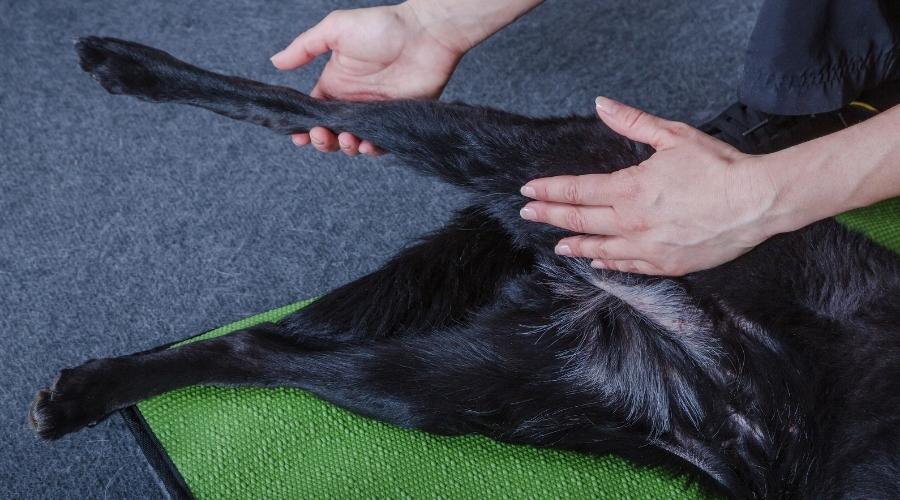
Elbow dysplasia treatment in dogs depends on the primary cause and severity of the disease. Typically, surgical intervention is the favored approach; however, if the issue is relatively mild or excessively severe to the point where surgery may not be advantageous, your veterinarian might recommend a medical management plan.
Surgery For Elbow Dysplasia
In most cases, your veterinarian will refer you to a veterinary orthopedic surgeon who’s skilled in elbow dysplasia surgery. The type of surgery a dog needs depends on the primary disease (FCP, OCD, or UAP) and the extent of damage. In general, the primary objective of surgical intervention for mild instances of elbow dysplasia is to excise any damaged tissues, which frequently alleviates pain. Conversely, dogs exhibiting moderate to severe elbow deformities may require more extensive surgical procedures to properly realign the malformed elbow joint.
Often, surgery is best performed arthroscopically, but other surgical techniques, such as arthrotomy (making an incision into a joint) or ulnar osteotomy (cutting the ulna bone), are sometimes necessary. According to the ACVS, depending on the individual dog’s elbow problem, surgery may involve:
- Removal of any bone fragments and loose cartilage (FCP).
- Alteration of the elbow joint to shift weight away from damaged areas.
- Reattachment or removal of a united anconeal process (UAP) of the medial joint compartment.
- Correction of joint step/incongruity; this is usually done by cutting the ulna to re-establish elbow congruence.
- Total joint replacement if the elbow is severely diseased (however, this procedure is extremely expensive and can have serious complications).
Surgery aftercare will depend on the type of surgery performed, and your veterinarian will advise you of exactly what is required. In general, your dog will need to be quiet and confined for a period of time, usually from 2–6 weeks or more. Based on the type of surgery, your pup may require post-op physical therapy and rehabilitation to aid in recovery.
Dog Elbow Dysplasia Surgery Success Rate
The outcome differs from one dog to another, but generally speaking, the milder the condition and the sooner it is treated, the more favorable the long-term results tend to be. However, it’s important to keep in mind that elbow dysplasia is not curable, and some dogs don’t respond to certain surgical techniques.
Nonetheless, the majority of dogs benefit from surgical intervention, even in cases where the primary disease is more advanced. It is important to note that if arthritis is already present, it will continue to progress over time, irrespective of the treatment administered. According to the ACVS, approximately 85% of cases will exhibit some level of improvement in lameness and comfort with treatment, despite the ongoing progression of arthritis.
How Much Does Canine Elbow Dysplasia Surgery Cost?
Depending on the severity of the disease, the type of surgery required, and where you live, elbow dysplasia surgery costs range from $1,500 to $4,000 or more per elbow.
Medical Management: Supplements, Drugs & Therapies
Medical management of elbow dysplasia can encompass some of the following treatment options. Some of these methods are also helpful for dogs who have undergone surgery but still have some degree of joint pain and lameness.
- Controlled exercise, e.g., avoiding running, jumping down from furniture, sharp turns at high speeds, rough play with other dogs, etc.
- Weight reduction to relieve stress off of the elbow
- Physical therapy, including range of motion movements, massage, hydrotherapy, cold laser treatments, etc.
- Joint supplements that include ingredients such as glucosamine, chondroitin, MSM, green-lipped mussels, etc. (see our reviews of the best joint supplements for dogs)
- Anti-inflammatory medications, including nonsteroidal anti-inflammatory drugs (NSAIDs), such as rimadyl, and corticosteroids
- Injectibles, such as Adequan, platelet-rich plasma (PRP), Librela, and Synovetin OA, to control inflammation and pain
How Pet Insurance Can Help

Veterinary expenses continue to rise at alarming rates. Conditions like elbow dysplasia (and many other unforeseen canine diseases and injuries) can be extremely expensive to diagnose and treat. In many cases, a reasonable monthly premium for pet insurance can help you budget for a significant portion of your expensive vet bills.
However, it’s so important to know that pet insurance won’t cover any hereditary condition or illness if signs are present before you enroll (or during pet insurance waiting periods). Why? They’re considered pre-existing conditions and are ineligible for coverage. That’s why signing your pup up for pet insurance is crucial while they’re young and before any health problems occur. See our reviews of the best pet insurance companies to learn more.
How To Prevent Elbow Dysplasia
When large and giant breed puppies grow too fast, they’re highly susceptible to skeletal disorders like elbow and hip dysplasia. These puppies require special nutrition to slow down their growth. Large breed puppy food (versus regular puppy food) contains the ideal levels of nutrients to allow their joints to develop appropriately, which can help prevent the development of dysplasia and other joint problems later in life. Check out our reviews of the best puppy food for large breeds. Feeding your puppy a large breed formula is imperative to help avoid skeletal and joint problems.
Excess weight can also exacerbate elbow dysplasia. While many cases develop when a dog is still a puppy, older dogs can also be affected. That’s one of the many reasons to ensure that your furry friend stays at a healthy weight. If your dog is obese or overweight, talk to your veterinarian about a weight loss plan, which can include exercise and a special diet. See our reviews of the best dog foods for weight loss.
Find A Reputable Breeder
Because elbow dysplasia is an inherited condition, it’s important to buy a puppy from a breeder who has had their dog screened for elbow dysplasia (and other hereditary health problems) before mating them. This will greatly reduce the risk of your puppy developing this problem. See our guide on how to find a reputable breeder.
Need Some Gear To Help Your Dog’s Mobility Problems?
Although elbow dysplasia treatment usually has positive outcomes, most dogs with this disease develop arthritis, and some struggle with compromised mobility for the rest of their lives. To make your pup as comfortable as possible, you may want to consider some gear that’s ideal for chronic joint conditions. See our reviews of the best orthopedic dog beds, indoor dog ramps and steps, and outdoor ramps for cars and SUVs. You may also want to check out my article on how to stop your dog from slipping on the floor if you have slick flooring.
Why Trust Canine Journal?
Sally has over 20 years of experience in human health sciences communications, including over 10 years as an expert on pet health conditions and treatment. She has reviewed and researched hundreds of canine medical conditions and treatments. Sally is part of a team of dedicated canine professionals and long-time dog owners at Canine Journal.


